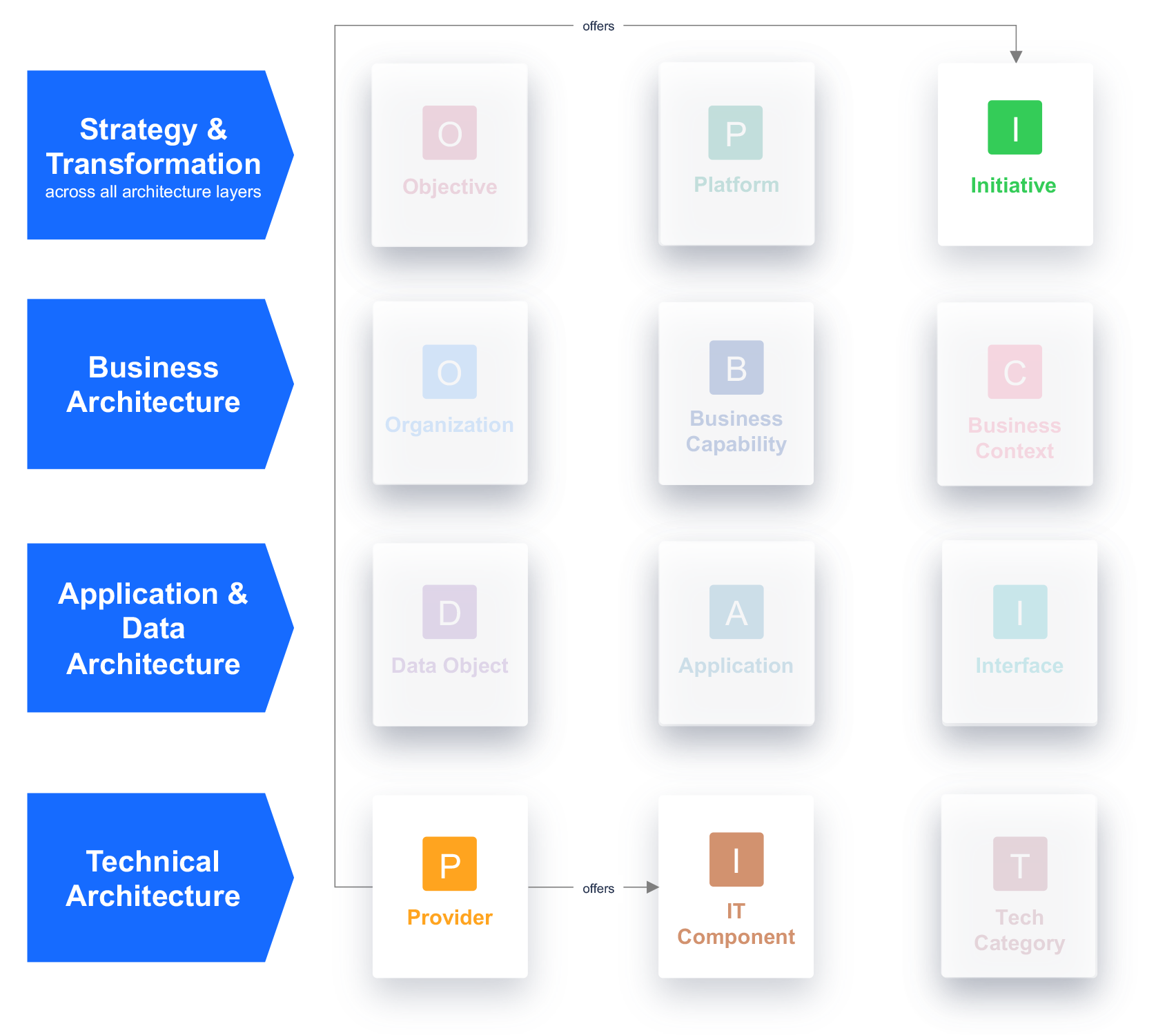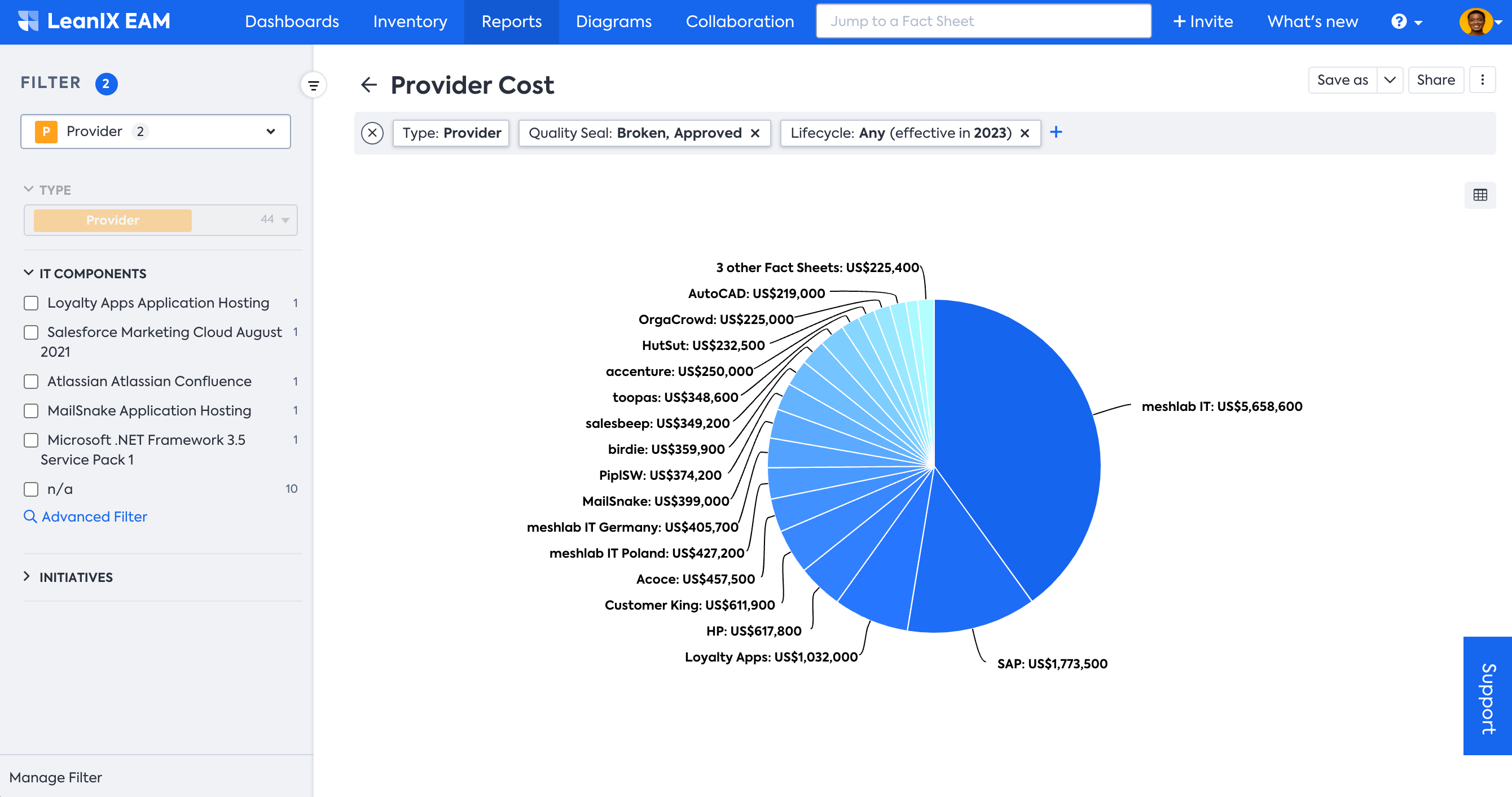Provider
Definition
Providers are companies or entities that supply IT solutions, services, or technologies to support businesses in achieving their objectives and operational efficiency.
Description
Provider typically refers to the 3rd party entity that takes on the role of ownership and host for an Application’s underlying technology, service (IT Component), or plans and executes initiatives. It indicates the responsible party or system that maintains and updates the technology over time.
For example, suppose an organization offers a web service to other systems or applications. In that case, the system providing that web service is considered the Provider of that service in LeanIX. The Provider is responsible for any changes or updates to the web service and its associated documentation, ensuring that it remains operational and up-to-date for its consumers.
This example shows the relations between the Provider, IT Component, and Initiative: SAP is the provider for the SAP Leonardo backend. Consultancy or IT solution provider (e.g., Accenture, Deloitte, Capgemini, EY) is the provider to plan and execute your SAP S/4HANA transformation initiative.
Overview of all relations to/from Provider:

Providers Examples: SAP as Provider, S/4HANA as Initiative
Guidelines and Best Practices
There is no direct relation from the Provider to the Application because many companies see large parts of their landscape hosted in more complex setups than straightforward SaaS apps. The Provider -> IT Component -> Application relation supports complex hosting structures, such as an application provided by Company A that you are running on servers by Company B. SaaS is simplified further by the Lifecycle Catalog.
- Leverage the Lifecycle Catalog: LeanIX will automatically add the respective providers when adding IT Components from the Lifecycle Catalog. LeanIX has a catalog of 9000 providers. In addition, the catalog creates a standard nomenclature (hierarchy) for more complex providers, e.g., HP, Linux, etc.
- Classify Provider Relationships. Classify the providers based on their strategic importance and the extent of their impact on your organization. Categorize vendors into different tiers based on dependency, spending, etc.
- If you want to manage self-developed software applications, e.g., with the breakdown to microservices, we recommend modeling such internal engineering or developer teams as Organization with subtype Team.
When you model the Provider correctly, you can now leverage various reports, such as the Provider Cost Report.

Antipatterns
This section addresses antipatterns involving ineffective or counterproductive ways of modeling Providers in LeanIX.
- Don’t link the Provider directly to the Applications.
Applicable Use Cases
Having the Provider in LeanIX brings you information for Vendor or Provider Management that can help you with the Application Rationalization journey.
Insights from Provider Fact Sheet
- Show all the costs per provider for IT Components using the Provider Cost Report.
Further Resources
Updated about 1 month ago
